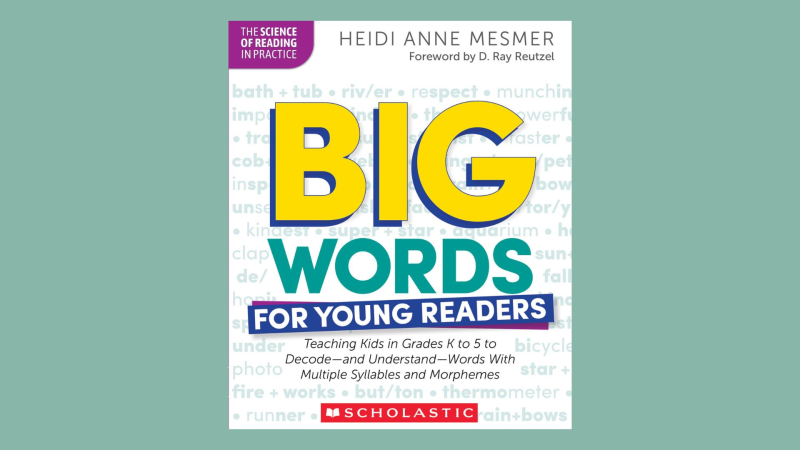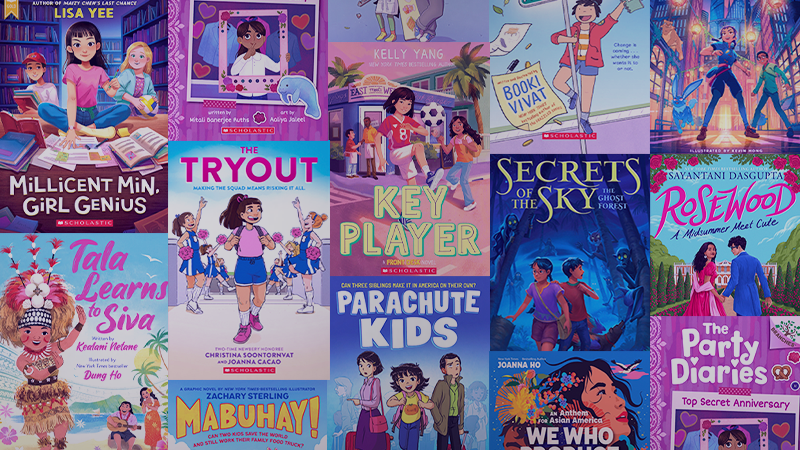This post is part of an ongoing series exploring new findings from the Scholastic Teacher & Principal School Report: 2nd Edition. This national survey of 4,517 public school Pre-K–12 educators, conducted by YouGov, focuses on critical issues affecting schools and districts across the country. Below, Dr. Karen Burke explores the academic benefits of reading to stem learning loss.
It’s unquestionable that families and educators everywhere are feeling the stress from the effects of the coronavirus pandemic. While the overall impact of this year’s more than 124,000 school closures in the U.S. is only starting to be researched, NWEA published an analysis of the “COVID slide” in April, estimating the possibility that students could return to classrooms in the fall having retained only 70% of their learning gains in reading compared to a typical school year. This slide in skills only compounds the traditional, annual “summer slide” often experienced by students and represents a greater call to action to support continued learning during the summer months.
Findings from the Scholastic Teacher & Principal School Report: 2nd Edition, fielded between December 9, 2019 and January 31, 2020 prior to the coronavirus outbreak, reveal the extent to which the summer slide alone impedes grade-level learning in America’s schools during a typical year.
- Six-in-ten (62%) teachers share that they notice a summer slide among their students in the 2019–20 academic year and among pre-K–5 teachers, this is even higher at 69%.
- Teachers also report spending 50 hours making up for the effects of a typical summer slide—62 hours on average for pre-K–5 teachers.
- Notably, these numbers are even higher in lower income communities. Teachers in high-poverty schools are more likely to notice a summer slide than their low-poverty counterparts (65% vs. 54%), and spend even more valuable class time (65 hours) making up for this learning loss.
These data points speak volumes, and with more than half of students across socio-economic levels experiencing the effects of the summer slide during a standard year, this is only the tip of the iceberg. School shutdowns present an unprecedented potential for learning loss, exacerbated by the devastating toll this virus has taken on many educators and families. In a June survey, The Education Trust found that nearly 9 in 10 parents are worried about their children falling behind academically due to coronavirus-related school closures, ranking higher than any other financial or social-emotional concern.
Uncertainty surrounding how schools will decide to safely reopen in the fall adds to this urgency. With some school districts announcing they will solely offer remote learning or a hybrid in-person/remote approach as their back-to-school instructional models, many educators remain concerned about student engagement in learning.
The stakes have never been higher, and right now, to help students continue to maintain and improve their academic skills, frequent independent reading and access to high-quality books are crucial to bridge this gap. Research conducted by Christy Whitten, Sam L. Sullivan, and Sandra Labby concluded that students who engage in pleasure reading experienced increases in English, science, math, and history. They explain, “Reading helps students think critically and improves reading comprehension skills, which is beneficial in every subject area measured in this study. However, the benefits of pleasure reading do not end in the classroom. Students take the skills they have honed through reading into adulthood and, in turn, into the workforce and society.”
In the Teacher & Principal School Report, educators overwhelmingly agree (99%), reading books for fun supports students’ academic success. They also acknowledge that the benefits of reading fiction and nonfiction are wide ranging.
The majority of educators point to building reading comprehension (89%), academic vocabulary (88%), and reading fluency (88%) as the top benefits for students’ academic development. Other benefits include: building content area knowledge (84%), building background knowledge (83%), overall academic achievement (82%), helping students in learning (80%), building reading stamina (80%), building conversation skills (74%), and building writing skills (73%).
Looking back to Teacher & Principal School Report findings from the 2019–20 academic year, only 34% of teachers indicated that they set aside time every school day for independent reading, for 22 minutes on average. At the time, eight-in-ten teachers said this practice wasn’t happening to the degree it should, with 63% pointing to the demands of curriculum as a barrier to this happening more. What does this data tell us? There is a clear need for independent reading to be a continued practice beyond the typical school day.
At home now and year-round, it’s imperative for caregivers to serve as partners in learning by cultivating a culture of literacy through increased access to books and frequent reading. Encouraging reading as a regular habit will not only help mitigate summer learning loss and ensure that children develop key foundational literacy skills such as comprehension and vocabulary, but will also help guide them toward the path to becoming lifelong, joyful readers and learners. Explore free resources such as the Libby app through your local public library or Scholastic Summer Read-a-Palooza program, which offers a selection of free books to read online as well as the opportunity for children to track their daily reading progress by logging Reading Streaks™.
Looking ahead to the new academic year, the transition back to school will not be an easy one and this will undoubtedly look different for each school and educator, district and state. Take deep breaths—you are not alone—and right now, focus on finding ways to ensure that reading continues every day for each child.
Keep Reading: Don’t miss the other posts from this series! Click the links below to discover additional research from the Scholastic Teacher & Principal School Report.
- Discovering a Social-Emotional Lifeline Through Reading by Pam Allyn
- Teachers and Principals Reflect on COVID-19 and the Academic Year Ahead by Brittany Sullivan
- Professional Learning Trends for 2020 and Beyond by Dr. Carol Chanter
- What Teachers Want in Children’s Books by Deimosa Webber-Bey
Methodology: To see the full Scholastic Teacher & Principal School Report: 2nd Edition methodology, click here.





